- Home
- Keith Douglass
Flame Out c-4
Flame Out c-4 Read online
Flame Out
( Carrier - 4 )
Keith Douglass
The Soviet Union, under new, communist leadership, has invaded Norway. Carrier Battle group 14, sailing in the north Atlantic, is the closest American Naval asset and is ordered into the Norwegian sea to intervene. But the Americans are far outnumbered and soon find themselves, along with the Norwegians, in a desperate fight for survival.
Keith Douglass
Flame Out
PROLOGUE
Wednesday, 4 June, 1997
1827 hours Zulu (1527 hours Zone)
Intruder 507
Over the North Atlantic
Rain spattered the front of the cockpit, loud even against the drone of the A-6E Intruder’s two Pratt and Whitney turbojets. Bleed air blasted the rain away from the canopy, but the visibility wasn’t good. Not good at all …
“Perfect end to a perfect mission,” Bannon muttered aloud. It was true. The Intruder squadron off U.S.S. Thomas Jefferson had been practicing antiship attacks against the frigate Gridley for two hours until worsening weather had finally made further operations impossible. Bannon had made four mock passes against her, but each time the burly man in the Bombardier/Navigator’s position beside him had found some fault with the way he handled the plane. And each time Intruder 507 had ended up missing the target. He felt like a newbie aviator back at flight school in Pensacola again.
The weather had clamped down over the carrier deck just in time to screw up their landing approach, of course. That had slowed down the recovery cycle, especially after Lieutenant Commander Anderson had been waved off on two attempts. The delay had kept them circling far longer than he liked, and Bannon had been worrying about the fuel level for the past ten minutes. Ordinarily he would have Put in a request to tank up from an orbiting KA-6D tanker, but he didn’t want to elicit yet another scathing comment from his companion. Now he was regretting the decision not to ask for a shot at the “Texaco.”
“Watch your angle of attack, kid,” Commander Isaac Greene growled. He was second in command of the carrier’s Air Wing, and he was outspoken, quick-tempered, harsh in his judgment of his subordinates. It didn’t help that “Jolly Greene” was a genuine hero, a veritable legend aboard the Jefferson, who had earned the right to criticize inexperienced young aviators a dozen times over. As CO of VA-89, the Death Dealers, Greene had led the famous Alpha Strikes of the carrier’s Pacific cruise two years back — over North Korea, Thailand, India — before reaching his new post as Deputy CAG. “Save the comments for after we’re down on the deck,” Greene added.
Now Bannon was part of VA-89 … and Greene, with his long-standing proprietary interest in the Death Dealers, was inclined to ride all of the Intruder pilots in his charge. But sometimes it seemed as if the Deputy CAG had a particular wish to make Bannon’s life a special slice of Hell.
Bannon felt himself tensing up. He tried to force himself to relax, but it didn’t work.
“Aye, aye, sir,” Bannon responded. He tried to correct his approach, but it was hard to tell if he had compensated enough. Lashing rain and low clouds and the frustration of the long, fruitless exercise were all combining to sap his confidence.
He glanced across at Greene, but the commander didn’t seem to be aware of Bannon’s uncertainty. “You’re going to need to show me a hell of an improvement before I’m satisfied with your flying, kid,” he said inexorably. “The Intruder’s a precision flying machine, but you drive it like a damned truck.”
“Intruder Five-oh-seven.” The call on the radio was matter-of-fact, almost bored. The Landing Signals Officer had already brought in half a dozen Intruders from the training run, and sounded ready to come in out of the weather. “On line, slightly to the left. Three-quarter mile. Call the ball.”
Bannon squinted through the canopy, trying to spot something, anything, through the washed-out gray drizzle that made sea and sky look the same. The shape of the carrier was sketchy in the mist. How the hell was he supposed to spot the Fresnel lens that was supposed to help guide his final approach?
But he finally caught sight of it. “Five-oh-seven, Intruder ball,” he reported on the radio. “Zero point nine.” Nine hundred pounds of fuel left. A bolter now would leave him breathing fumes by the time he was ready for another pass.
“Attitude,” the LSO said quietly. The best LSOs in the fleet were the ones who avoided too much instruction when they were bringing a plane in to the deck. Lieutenant George “Hacker” Hackenberg was one of the best.
But Greene, on the other hand, was all too free with advice and criticism. “Come on, kid,” he amplified. “Your angle’s all wrong! Pull up the nose, for God’s sake, and line her up!”
Bannon gritted his teeth and corrected more. He was coming down at too steep an angle …
“Nose up,” the LSO said. “Nose up.”
The controls seemed sluggish, slow to respond. Panic gripped him. He pulled back … back …
Ahead the red lights around the Fresnel lens lit up suddenly, while the LSO screamed in his ear. “Wave off! Wave off!” He rammed the throttles forward just as the wheels touched the deck. The Intruder lifted again, but too slow … There was something wrong, but he didn’t know what, and he couldn’t make the airplane respond.
The wheels touched again. Then the Intruder was moving sideways, a sickening, wrenching motion. Bannon fought the skid, but the plane continued its uncontrolled slide across the rain-washed deck. He had a confused impression of a line of parked planes ahead …
“Eject! Eject!” he shouted, his hand already closing on the handle. The canopy blasted clear and the ejection seat tried to ram his spine through the top of his head. He was spinning up, up, over the side of the carrier, his chute blossoming above him. It snagged on some projection just as the Intruder slammed into a parked Tomcat and exploded.
The fireball blossoming on the deck lit up the overcast sky, and the roar was deafening. Bannon flinched instinctively from the sound, but the entangling shroud lines held him fast. He shook his head to clear the ringing from his ears, and thought he could hear the klaxons on the flight deck blaring their alarm.
Vaguely, Bannon noticed another chute spread out in the water below him. So Jolly Green had cleared the side of the carrier. Probably, he thought bitterly, the veteran wouldn’t allow anything so unheroic as getting caught dangling over the ocean by his chute to happen to him.
Then he passed out.
He didn’t know how much time passed before he awakened again, but he was back on deck and being lifted carefully onto a stretcher by a pair of corpsmen. Through waves of dizziness he heard roaring flames and the shouts of Damage Control technicians fighting the fire, and over it all the sound of a Search and Rescue chopper’s rotors.
They were strapping him in to the stretcher when Hackenberg’s worried face appeared behind the two corpsmen. “What’s the word, Doc?” the lieutenant asked.
“Looks like he was just shaken up a little,” one of the corpsmen replied, adjusting the strap across Bannon’s chest.
“How about Commander Greene? Where’s he?” Hackenberg asked.
The other one shook his head. “No joy, Lieutenant. SAR copter couldn’t get him. He just sank before they could get to him. Sorry.”
Bannon struggled against the straps. It didn’t seem possible … it wasn’t right. How had he lived when Jolly Green hadn’t?
“Take it easy, sir,” one of the corpsmen said. “Easy. Everything’s okay.”
But Bannon knew better. Commander Greene was dead … and it was his fault. All his fault … Darkness claimed him.
CHAPTER 1
Monday, 9 June, 1997
2234 hours Zulu (2034 hours Zone)
Tomcat 109, Mercury Flight
Over the North Atlantic
“Mercury Leader, this is Mercury Two. I’m disengaging now.”
Commander Matthew Magruder, running name “Tombstone,” checked his fuel gauge and eased back on the Tomcat’s throttle. “Roger that, Two,” he said, trying to keep the anxious edge out of his voice. “Hope you left some for me.”
Over the radio he heard Lieutenant Gary “Kos” Koslosky chuckle. “Don’t worry, Commander. I’m just a social drinker.”
The young pilot’s casual tone made Magruder frown. His F-14 was down to less than a thousand pounds of fuel, which would keep him aloft for no more than fifteen minutes. Here in the middle of the North Atlantic, a hundred and fifty miles from the carrier deck that was the only place the Tomcat could land, Tombstone didn’t like joking about something so critical.
“Mercury Leader, this is Darkstar,” the tanker pilot’s voice came over the radio. “Mercury Two is clear. Bring her in.”
Tombstone extended the Tomcat’s refueling probe and eased the massive jet into position. The KA-6D loomed above and ahead, a silhouette against the starlit night sky. Behind the tanker, the refueling basket trailed along at the end of a fifty-foot hose, almost invisible except for the tiny circular constellation of running lights that showed the mouth of the hose. In the turbulence the basket floated from side to side, making it difficult to line up on the small target.
The Tomcat rose slowly, smoothly, as Tombstone manipulated throttle, stick, and rudder pedals to urge the aircraft closer. It was one of the most demanding maneuvers an aviator had to master, and it had been nearly two years since Magruder had been called upon to attempt a midair refueling. Darkness and fatigue and uncertain winds were all combining to test skills he hadn’t practiced for all too long.
It didn’t help to realize that his Radar Intercept Officer, Lieutenant j.g. Nicholas “Saint” Whitman, wouldn’t be much help to him tonight. Whitman was young, inexperienced, a “nugget” Naval Flight Officer fresh from a Reserve Air Group. He hadn’t said more than a few words since the Tomcat had first climbed from the runway at Oceana Naval Air Station hours before. Even if he broke his silence now, Tombstone wasn’t sure how much he’d be able to rely on the young officer’s judgment.
Tombstone bit his lip under his oxygen mask as the probe moved closer to the basket. It looked good … good …
Then, at the last possible second, the basket shifted upward about a foot and the tip of the Tomcat’s probe rimmed it at the nine o’clock position. The basket tilted to one side, then slipped away, lost in the darkness above.
He cut the throttle and started carefully backing down and out from the tanker, all too aware of the dangers posed by that unseen basket. It was deceptive the way it swayed on the end of the long fuel line. Moving at close to three hundred knots, that heavy iron-mesh basket was nothing to be trifled with. If its hundred-pound weight struck the Tomcat’s canopy the Plexiglas could shatter, and Magruder had no desire to risk depressurizing the fighter’s cockpit at fifteen thousand feet. Flying this close to another aircraft in the dark could only compound the hazards. He’d seen a pilot lose it once during a refueling accident and slam his plane right into the tanker in the first panicked moments after the canopy was breached.
Tombstone let out a sigh as the Tomcat stabilized back where it had started in the approach position. He couldn’t see the basket now. It was invisible at night outside of a range of four or five yards, despite the lights around the rim. It took experience and practice to judge an approach, particularly in the dark. He pushed the throttle forward to begin another run.
He picked up the lights of the basket on the left side of the Tomcat, and Tombstone edged over to port to line up his probe. When it was properly positioned to the right of the plane’s nose he let the F-14 drift forward slowly. The basket slid along the right side of the canopy and gave a tiny clunk as the probe slipped in. Magruder felt like letting out a triumphant yell, but he didn’t break his concentration. The docking process was only the beginning of the refueling operation, and there was still plenty that could go wrong.
The hose was visible outside the cockpit, marked off with yellow stripes every three feet. Proper procedure dictated that he increase his throttle to push the basket forward along the fuel line by two stripes, which would position the nose of the Tomcat about ten feet behind and ten feet below the fat-bellied Intruder tanker. A take-up reel aboard the KA-6D was supposed to reel in the slack automatically until the basket tripped the pump system and fuel began to flow. Tombstone guided the aircraft forward until the two stripes had disappeared. He looked upward at the basket receptacle in the belly of the tanker above, a circular hole which surrounded the fuel line. On either side of the receptacle lights were mounted, one red, one green. When the green light was lit the pumps were operating, but as Tombstone squinted upward all he saw was the harsh red glare that told him the pumps were off.
“Darkstar, Mercury Leader. Light’s still red,” he reported.
“I copy, Mercury Leader,” the tanker pilot responded. “Try bringing her forward another notch. Maybe that’ll do the trick.”
“Roger, Darkstar.” Tombstone eased the throttle forward a little more. He could feel sweat trickling down his forehead. It took a lot of effort to keep the Tomcat precisely in the groove, and the added strain of the problem with the pumps made it that much worse. The third stripe disappeared, but the red light continued to glow above.
“Still no green, Darkstar,” Tombstone said.
“Copy, Mercury One. Back out again and we’ll recycle.”
Once again the Tomcat dropped aft and down while the tanker crew reeled in the hose and redeployed it again. Tombstone glanced at his instrument panel and felt his throat tighten. Seven hundred pounds of fuel left. If this didn’t work there was no way the Tomcat would reach the U.S.S. Thomas Jefferson for a safe landing. Without fuel the engines would flame out and they would have to ditch, and Magruder didn’t like the thought of a night ejection over the rough waters of the North Atlantic this far from a carrier. It might take hours for an SAR helicopter to find the Tomcat’s crew … if they were ever found at all.
“What are we going to do if we can’t refuel, Mr. Magruder?” Whitman asked suddenly over the Tomcat’s ICS intercom. He sounded scared … as scared as Tombstone felt.
Before Tombstone could answer, the tanker pilot was back on the radio. “Try it again, Mercury Leader. We’re ready.”
He glanced at the fuel gauge again as he applied more throttle. Six hundred pounds now. The basket appeared out of the darkness, farther to the right than he’d thought it would be. Tombstone eased the stick over and began to line up.
“Mercury Leader, this is Two,” Koslosky called. “Aren’t you done tanking yet, Tombstone?”
“Negative,” he snapped back, cursing under his breath. The younger pilot’s call had made him over-correct. Now he had to back off or risk brushing the basket …
“Help me watch that damned thing, kid,” he told Whitman. Even a nugget’s eyes would be useful now. When a pilot started paying too much attention to watching his target instead of his controls, it was easy to screw up an approach.
“Aye, aye, sir,” Saint replied. “It’s looking good, real good now …” The Tomcat slid forward slowly …
A solid clunk signaled a good connection, and the hose rippled in a perfect sine wave from the contact. Tombstone increased power and pushed the basket forward, his eyes on the two lights by the basket receptacle. The red one was still glowing.
“Darkstar, still no green,” he said.
“Sorry about that, Mercury Leader,” the tanker pilot responded. “Goddamned thing must be Tango Uniform.” That was maintenance slang for “tits up”—out of order. “Look, we’re pretty far from the Big J. Back her off while I reverse left and we can try again.”
“Negative, negative,” Tombstone responded angrily. It would take two minutes to turn around, maybe longer, and he was down to less than four hundred pounds of
fuel. He wasn’t going to waste valuable time waiting for the tanker to get comfortable on a heading for home … not when every minute brought him closer to a flame-out. “Let’s recycle one more time, Darkstar.”
“Mercury Leader, Mercury Leader, this is Domino.” That was the call sign for Air Ops aboard the Jefferson. The voice sounded worried. Had the carrier been listening in on the channel, or had the KA-6 called on higher authority after Tombstone’s demand for another try? “Say your fuel state, over.”
He answered as the Tomcat backed away from the basket and watched it disappear into the gloom once again. “Point three,” he replied tersely. His palms were sweaty now, and he didn’t want to be reminded of his fuel state again. The probe reappeared ahead, almost dead on target, and he started forward once again. Tombstone knew this would be his last chance.
“Mercury Leader, Domino. Recommend you back away now. We don’t want a flame-out that close to the Kilo Alpha. Over.”
Tombstone gritted his teeth but didn’t answer. He wasn’t going to give up yet …
The probe hooked up and he pushed the basket forward. It crossed the first line … the second … still no green light. Magruder muttered a curse against Murphy’s Law, gremlins, and careless maintenance men and edged the throttle further forward. Another stripe disappeared … and another.
The Tomcat’s canopy was only a few feet from the belly of the tanker, and even in the dark Tombstone thought he could see individual rivets in the fuselage.
“Darkstar, I’m pushing her all the way in,” he told the pilot. “Stay frosty and keep her level.”
“Roger that, Mercury Leader,” the pilot replied. “Good luck and may the Force be with you.” Behind the banter Tombstone knew the other pilot was as worried as he was.
The Tomcat inched forward … f … and the green light came on.

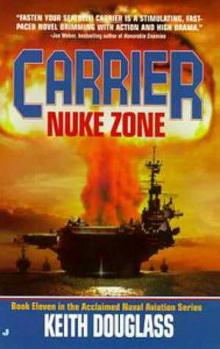 Nuke Zone c-11
Nuke Zone c-11 Seal Team Seven 6 - Battleground
Seal Team Seven 6 - Battleground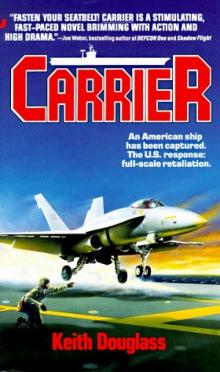 Carrier c-1
Carrier c-1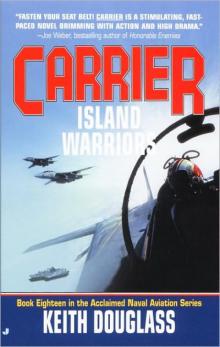 Island Warriors c-18
Island Warriors c-18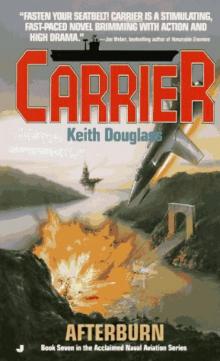 Afterburn c-7
Afterburn c-7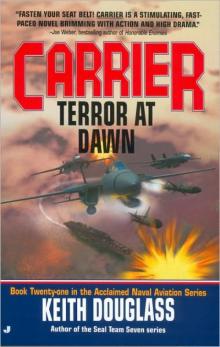 Terror At Dawn c-21
Terror At Dawn c-21 Specter sts-2
Specter sts-2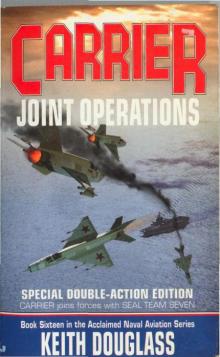 Joint Operations c-16
Joint Operations c-16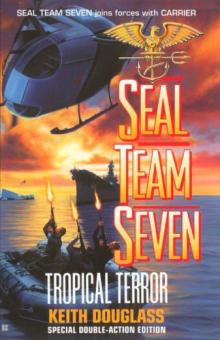 Tropical Terror sts-12
Tropical Terror sts-12 Seal Team Seven 7 - Deathrace
Seal Team Seven 7 - Deathrace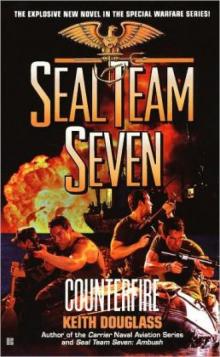 Counterfire sts-16
Counterfire sts-16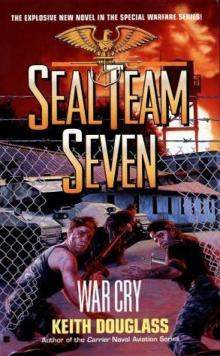 War Cry sts-9
War Cry sts-9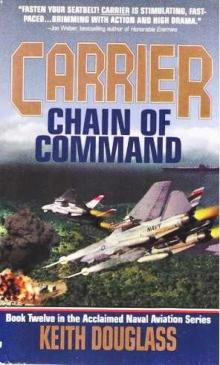 Chain of Command c-12
Chain of Command c-12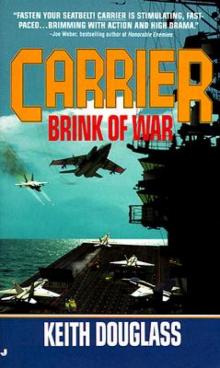 Brink of War c-13
Brink of War c-13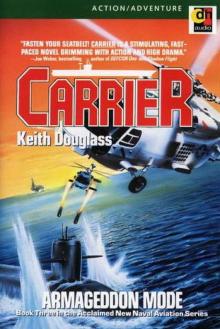 Armageddon Mode c-3
Armageddon Mode c-3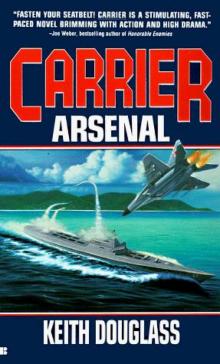 Arsenal c-10
Arsenal c-10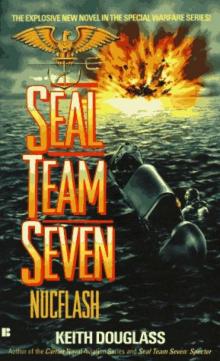 Nucflash sts-3
Nucflash sts-3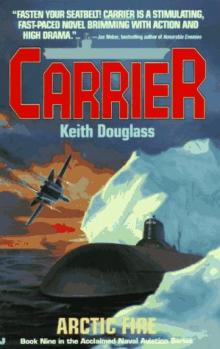 Arctic Fire c-9
Arctic Fire c-9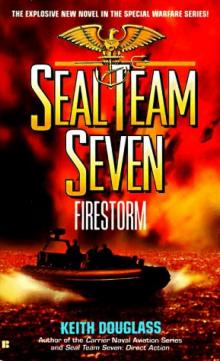 Firestorm sts-5
Firestorm sts-5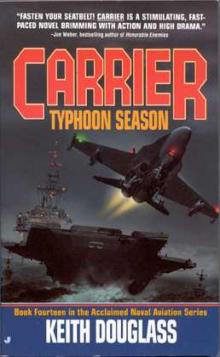 Typhoon Season c-14
Typhoon Season c-14 Alpha Strike c-8
Alpha Strike c-8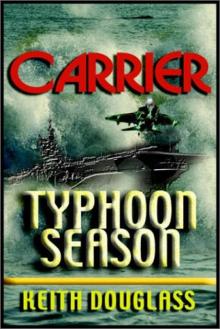 Carrier 14 - TYPHOON SEASON
Carrier 14 - TYPHOON SEASON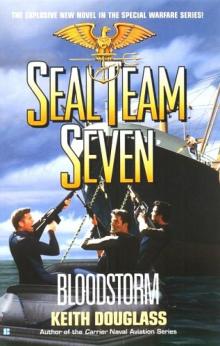 Bloodstorm sts-13
Bloodstorm sts-13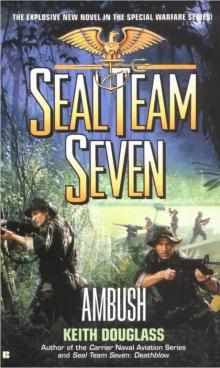 Ambush sts-15
Ambush sts-15 First Strike c-19
First Strike c-19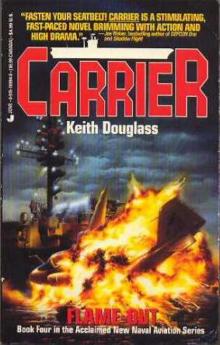 Flame Out c-4
Flame Out c-4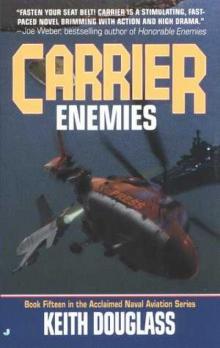 Enemies c-15
Enemies c-15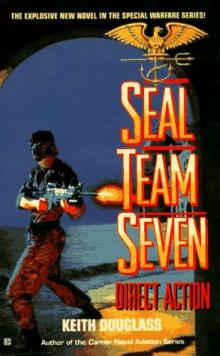 Seal Team Seven 04 - Direct Action
Seal Team Seven 04 - Direct Action Seal Team Seven 01 - Seal Team Seven
Seal Team Seven 01 - Seal Team Seven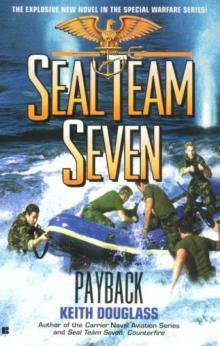 Payback sts-17
Payback sts-17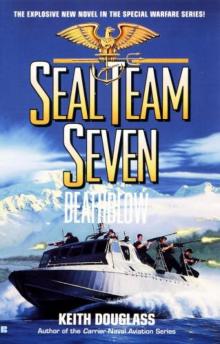 Death Blow sts-14
Death Blow sts-14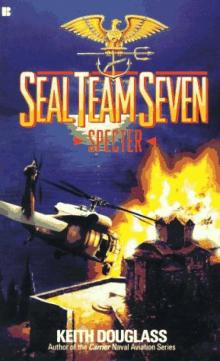 Seal Team Seven 02 - Spector
Seal Team Seven 02 - Spector Seal Team Seven 5 - Firestorm
Seal Team Seven 5 - Firestorm The Art of War c-17
The Art of War c-17 Flashpoint sts-11
Flashpoint sts-11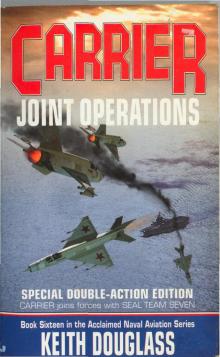 Carrier - Joint Operation Book 16
Carrier - Joint Operation Book 16 Frontal Assault sts-10
Frontal Assault sts-10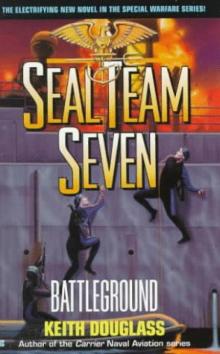 Battleground sts-6
Battleground sts-6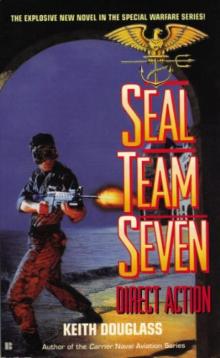 Direct Action sts-4
Direct Action sts-4 Deadly Force sts-18
Deadly Force sts-18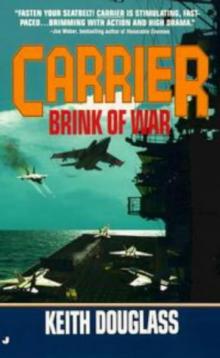 Carrier 13 - Brink of War
Carrier 13 - Brink of War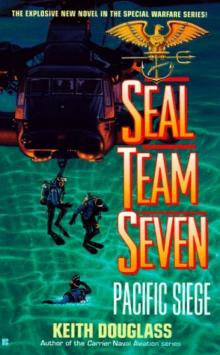 Pacific Siege sts-8
Pacific Siege sts-8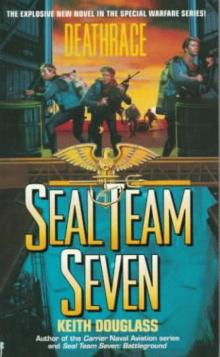 Deathrace sts-7
Deathrace sts-7